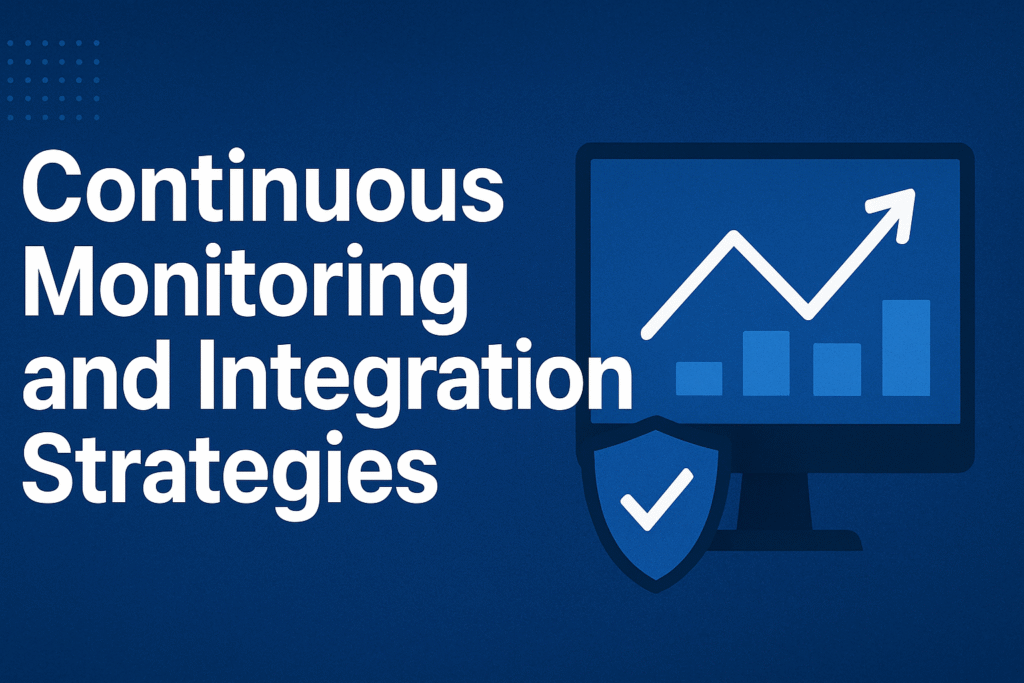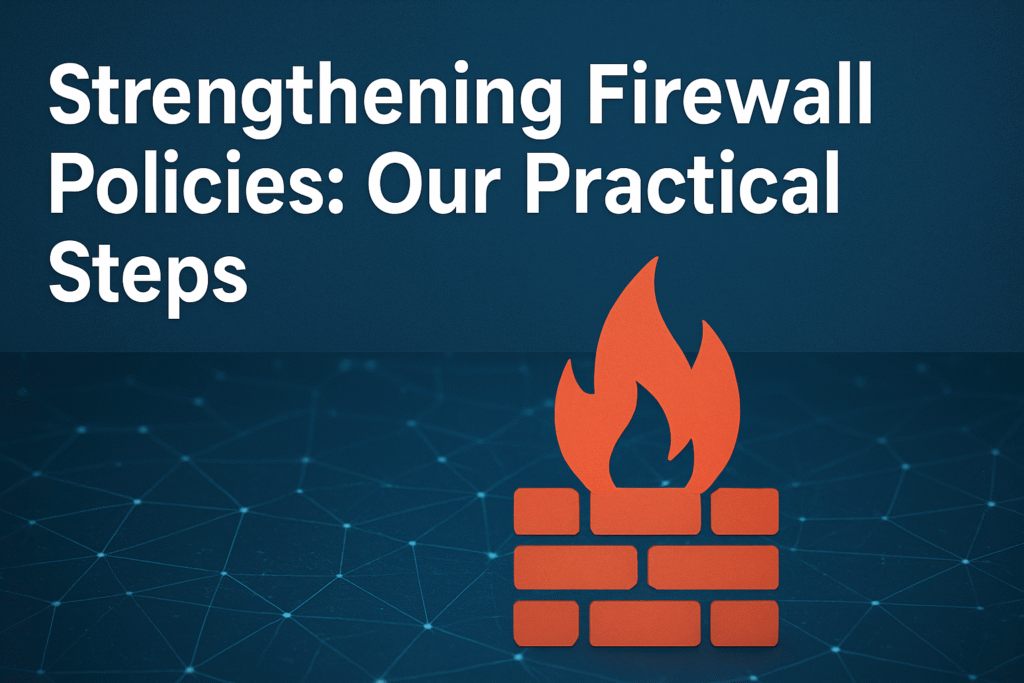Address
304 North Cardinal St.
Dorchester Center, MA 02124
Work Hours
Monday to Friday: 7AM - 7PM
Weekend: 10AM - 5PM
Address
304 North Cardinal St.
Dorchester Center, MA 02124
Work Hours
Monday to Friday: 7AM - 7PM
Weekend: 10AM - 5PM

Firewall policy management isn’t rocket science, but it’s still one of those things network admins tend to mess up. Most organizations end up with a messy pile of rules that nobody really understands anymore, kind of like that junk drawer everyone has in their kitchen.
The thing is, each rule sitting there needs to earn its keep. Too many networks are running ancient rules from three admins ago, and that’s just asking for trouble. Regular cleanups and smart tools (like those fancy AI-based ones that cost about $50K per year) can catch the risky stuff before it bites you.
Want to know how to keep your firewall rules tight without losing your mind? Keep reading.
Nobody likes cleaning up old messes, but that’s exactly what most network teams face when they look at their firewall rules. Picture a thousand-line spreadsheet where half the entries are probably useless, that’s what we’re dealing with here.
Getting this stuff sorted isn’t complicated, but it takes some elbow grease. First step’s always checking which rules actually get used (most firewalls track this automatically). For organizations seeking expert guidance, managed firewall services overview can streamline rule audits and optimize rule usage.
If a rule hasn’t been hit in six months, it’s probably dead weight. Then there’s the overlapping rules, you’d be surprised how many times the same traffic gets allowed or blocked three different ways.
Here’s what needs doing:
Checking against those compliance rules (PCI, HIPAA, all those three-letter headaches) isn’t fun, but it beats explaining to the CEO why customer data got leaked. Most decent-sized companies should run these checks quarterly, minimum.
Credits: CBT Nuggets
Look, nobody likes paperwork, but random firewall changes are how networks end up in trouble. Every single change needs proper sign-off, and yeah, that means filling out those request forms with actual details, not just “because Dave from IT said so.” Documentation’s gotta be clear enough that someone else can understand what changed and why, six months down the road.
Key steps before touching anything:
Testing in lab environments isn’t optional anymore, not with networks this complex. A tiny rule change can accidentally block half the accounting department’s access, and nobody wants that 3 AM phone call. Most organizations mess this part up by rushing straight to production.
Keeping tabs on who did what might sound boring, but it’s saved countless network admins from the “who broke it” blame game. Write everything down, even the small stuff. Future you will appreciate knowing why that weird port 8443 exception exists.
In a recent Tufin survey, 85% of organizations reported that half their firewall rule changes required later modification due to poor rule design. [1]

The days of checking logs once a week are long gone. Modern networks need 24/7 monitoring, and not just because the compliance folks say so. Organizations evaluating options often compare MSSP vs MDR services to determine which approach delivers the most effective threat detection and continuous oversight. Those SIEM systems (which run anywhere from 25K to 100K annually) earn their keep by catching weird stuff happening in real-time.
Getting the alert balance right’s tricky, too many and people ignore them, too few and stuff gets missed. Most teams start with these basics:
Networks change, businesses change, threats definitely change. That perfect firewall setup from last year? Probably needs tweaking now. Smart teams review their whole ruleset every quarter, minimum. And they’re not just looking at what to add, getting rid of old junk’s just as important.

Let’s face it, nobody’s got time to manually check thousands of firewall rules anymore. Those fancy automation tools (running about 30K to 75K per year) might seem expensive, but they beat having three analysts doing nothing but rule reviews all day. They catch stuff humans miss, like those sneaky overlapping rules that somehow let traffic through when they shouldn’t.
These new firewalls do way more than just block ports. They can tell the difference between someone using Zoom for work and streaming Netflix (which explains why they cost about 4x more than old-school firewalls). Some key things to watch for:
Getting all these security tools to play nice together used to be a nightmare. Now it’s just a regular headache. Most teams start by hooking their firewall into their SIEM, then gradually add connections to other tools as needed.
A recent IDC InfoBrief sponsored by FireMon reveals that 60% of organizations prioritize cost reduction in their operational strategies, identifying automation as pivotal to achieving these goals. [2]
Ever inherited a firewall with hundreds of rules and zero explanation? Yeah, that’s what we’re trying to avoid here. Every single rule needs these basics written down:
Too many firewall rules exist just because “someone important asked for it” five years ago. That’s not good enough anymore. Each rule should tie back to an actual business need, and if nobody can remember what that need was, maybe it’s time for that rule to go.
Nobody likes audits, but they’re coming whether we like it or not. Good documentation makes them less painful. Keeping clear records aligns with the typical SOC responsibilities and tasks, helping teams track incidents, rule changes, and compliance efforts efficiently.
Keep records of everything, changes, reviews, incidents, even those times when you thought about making a change but decided not to. Trust me, auditors love that kind of detail.

We find that the best firewall policy management isn’t theoretical, it’s hands-on and continuous. Here’s what we focus on to keep firewall rules effective and aligned with real-world needs:
By embracing these practices, organizations can reduce risk, maintain compliance, and adapt fluidly to evolving threats.
A firewall rule review should be done at least quarterly to keep the firewall policy audit accurate. During the review, check access control lists, apply the least privilege principle, and verify network segmentation across security zones.
Make sure the deny-all default policy is active and that rule documentation is updated. Look for redundant rule cleanup opportunities and rule shadowing detection. Automated firewall analysis and rule usage statistics can help.
Include authorized personnel control in the change management process, run rule testing, and confirm compliance alignment with PCI DSS firewall, HIPAA firewall, and GDPR network controls.
To keep firewall performance high, start with baseline policy creation and clear rule ownership assignment. Use network segmentation, zone-based firewall design, and application aware rules to separate perimeter firewall and internal firewall traffic.
Apply protocol restriction and port management to limit exposure. Rule optimization and rule consolidation improve efficiency, and firewall memory optimization prevents overload.
Always test rules before deployment and keep a firewall configuration backup. Use traffic logging, firewall logging best practices, and reporting dashboards to monitor behavior and improve policy enforcement over time.
Business requirements mapping should be part of firewall lifecycle management. Review policies whenever new applications, cloud services, or hybrid cloud firewalls are added.
Update policy documentation to reflect changes and use centralized firewall control for consistency. Include vulnerability patching, firewall updates, and policy realignment to stay secure.
Rule impact assessment helps avoid breaking critical services. Use segmentation strategy and granular access control to protect confidential data defense and resource protection. Rule change approval and rollback procedures reduce risk.
Compliance alignment requires a periodic rule audit, baseline policy creation, and proper policy documentation. Maintain audit trail recording for all rule changes and use security event correlation in your SIEM integration.
Review access control lists, confirm least privilege principle, and ensure global policies follow deny-all default policy. Run intrusion detection and anomaly detection for threat intelligence integration.
Use firewall alerting and reporting dashboards to show compliance progress. Multi-firewall coordination is critical if you manage hybrid cloud firewalls or cloud firewall management setups.
Firewall policy hardening starts with granular access control and rule ownership assignment. Apply zone-based firewall design and segmentation strategy to limit movement inside the network.
Use application aware rules, protocol restriction, and service sets to block unnecessary services. Insider threat prevention and external threat mitigation both benefit from SIEM integration, firewall alerting, and intrusion detection. Rule consolidation and object grouping make rules easier to audit.
Maintain firewall configuration backup and include rollback procedures as part of change management process. Keep user training ongoing so authorized personnel control access safely.
Firewall policy management requires steady attention and disciplined practices. Regularly reviewing, optimizing, and documenting rules keeps your firewall a reliable guardian, reducing vulnerabilities and supporting compliance with PCI DSS, HIPAA, or GDPR. Automated analysis and continuous monitoring amplify threat detection and response. Turn firewall management into a strategic asset by adopting these best practices.
Ready to strengthen your network defenses? Join our expert MSSP consulting services to streamline operations and optimize your tech stack.